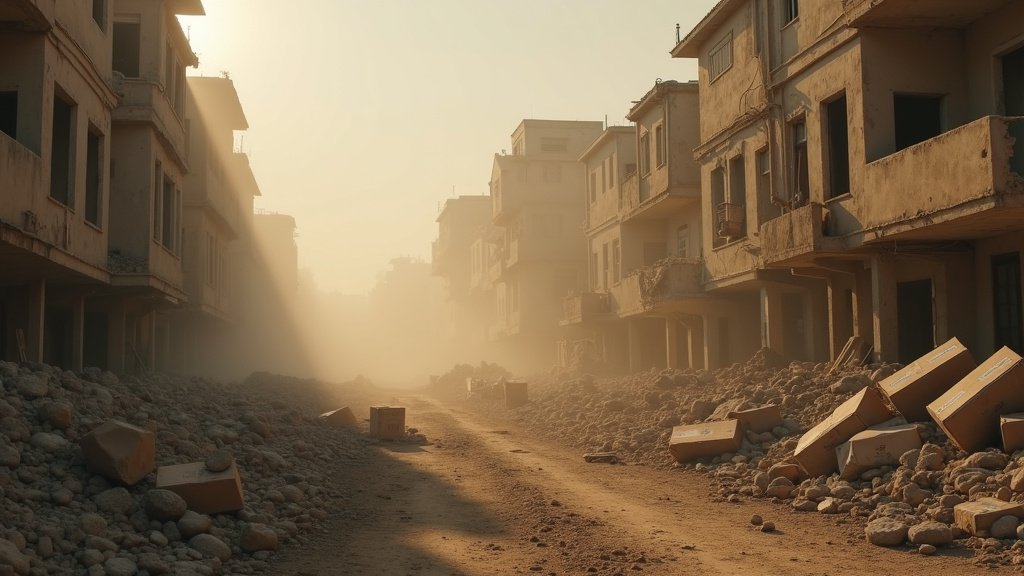In a significant challenge to a fragile truce, Israeli forces launched a wave of airstrikes across the Gaza Strip on Sunday, resulting in the deaths of dozens of Palestinians and leading to the temporary suspension of humanitarian aid deliveries. The escalation, which began after Israel accused Hamas of violating a ceasefire agreement, has raised fears of a renewed conflict and further exacerbated the dire humanitarian situation in the besieged territory.
Escalation Amidst Ceasefire
The Israeli military stated that its forces came under fire from Hamas militants in southern Gaza, an incident it described as a “blatant violation” of the ceasefire. This triggered a series of retaliatory strikes targeting what Israel termed Hamas positions, including tunnels and weapons depots. The strikes led to a significant Palestinian death toll, with reports from Gaza’s civil defense agency and hospitals indicating at least 44 to 45 people were killed on Sunday alone, though figures varied across different sources. Some reports mentioned specific tragic incidents, such as an Israeli tank shell in Gaza City that killed 11 members of a Palestinian family, including seven children. The initial context reported a broader figure of at least 97 Palestinians killed and 230 injured since the ceasefire began on October 10. Amidst the renewed hostilities, two Israeli soldiers were also reported killed in combat in southern Gaza, marking the first Israeli fatalities since the ceasefire took effect.
Aid Deliveries Halted, Then Resumed
Following the accusations of ceasefire violations, an Israeli security official announced that the transfer of humanitarian aid into Gaza was halted “until further notice”. This decision came as a major blow to humanitarian agencies already struggling to meet the immense needs of Gaza’s population, with aid access having been severely restricted for months. The halt in supplies intensified concerns about a deepening humanitarian crisis and the risk of famine. However, under significant pressure from the United States, Israel reversed its decision on Sunday evening, pledging to reopen Gaza’s crossings for humanitarian aid starting Monday. This development offered a glimmer of hope, though the security situation and the ability for sustained aid delivery remain precarious.
A Ceasefire Under Strain
The US-brokered ceasefire, which had brought a nine-day period of relative calm, was itself in its early stages and considered highly fragile. The first phase of the deal, initiated on October 10, involved the exchange of Israeli hostages for Palestinian prisoners and aimed to end two years of devastating war. However, both Israel and Hamas have been trading accusations of violations, underscoring the precariousness of the truce. Hamas has denied involvement in specific clashes cited by Israel and reiterated its commitment to the agreement. The resumption of fighting has led to widespread fear among Gaza’s residents of a complete collapse of the ceasefire and a return to full-scale war.
Global Implications and Humanitarian Concerns
This latest escalation highlights the ongoing humanitarian catastrophe in Gaza, where the majority of the population is dependent on humanitarian aid for survival. Aid agencies have repeatedly warned about the critical scarcity of essential supplies, including food, water, and medicine, even before this recent disruption. The ability to deliver aid effectively has been hampered by ongoing insecurity, restrictions at border crossings, and lawlessness within Gaza. The international community, particularly the United States, has played a role in de-escalating the immediate crisis by pressuring Israel to resume aid deliveries, demonstrating the global dimension of the conflict’s humanitarian impact. The situation remains a Trending news item, with mediators reportedly engaging in intensive diplomatic efforts to prevent further deterioration. The ongoing conflict and aid disruptions underscore the critical need for sustained, unimpeded humanitarian access to prevent further loss of life and alleviate widespread suffering.
Conclusion
As the ceasefire faces its most severe test since its inception, the events of Sunday have cast a dark shadow over hopes for lasting peace and stability in Gaza. The immediate resumption of aid, driven by international pressure, offers a temporary reprieve, but the underlying tensions and the cycle of violence threaten to plunge the region back into full-scale conflict. The ability of all parties to adhere to the ceasefire and ensure the safe passage of humanitarian aid will be critical in determining the future of Gaza and its population.
Further reading: Related News on Google




